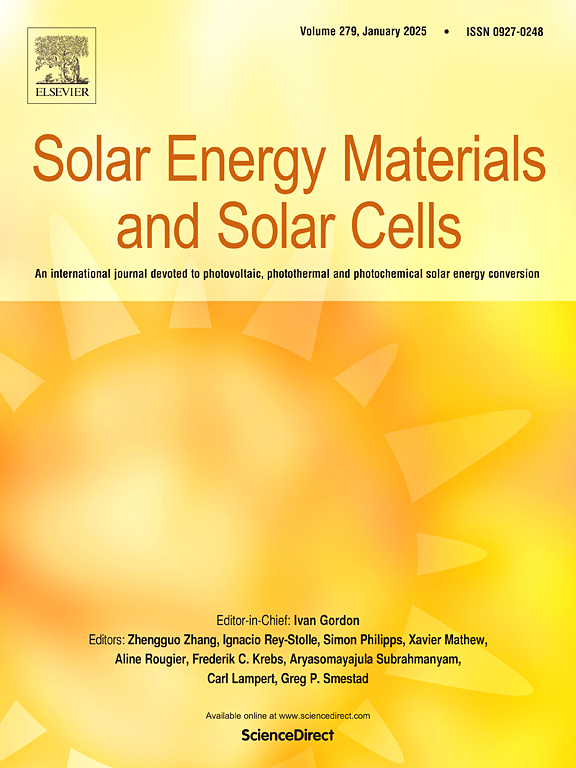Enhancing inline quality control: Machine learning for full scale 3D prediction of screen-printed silver contacts
IF 6.3
2区 材料科学
Q2 ENERGY & FUELS
引用次数: 0
Abstract
In the production of silicon solar cells, screen-printing is the industry standard for the application of silver electrodes. With regard to fine-line printing (<15 μm), however, this process often leads to inefficient silver consumption and increased lateral resistance of the grid due to irregularities such as mesh marks or interruptions. In this work we present insights into a full-scale software approach to evaluate the quality of the contact finger geometry inline and directly after printing. Several fully automatic image processing pipelines are developed to generate training data using images of a 2D microscope and a 3D confocal laser scanning microscope (CLSM). For inline use, another image processing pipeline is being developed to recognize structures fully automatically and provide them in the correct format. The use of machine learning methods enables a prediction of the 3-dimensional finger geometry, which can then be used to draw conclusions about the impact of parameter changes on the finger geometry. After training, the model's predicted height maps are compared with ground truth data, which are the actual measured values used to assess the model's accuracy. The results demonstrate the model's feasibility and reliability, extending its applicability to new, previously unseen data from screen-printed contact fingers. Based on the mean squared error (MSE), a prediction accuracy of 97,4 % was achieved. The 3-dimensional finger structures of a complete wafer (e.g. M2 format, 100 fingers) can be predicted within 338 ms which makes permanent inline use possible within the state-of-the-art cycle time.

求助全文
约1分钟内获得全文
求助全文
来源期刊

Solar Energy Materials and Solar Cells
工程技术-材料科学:综合
CiteScore
12.60
自引率
11.60%
发文量
513
审稿时长
47 days
期刊介绍:
Solar Energy Materials & Solar Cells is intended as a vehicle for the dissemination of research results on materials science and technology related to photovoltaic, photothermal and photoelectrochemical solar energy conversion. Materials science is taken in the broadest possible sense and encompasses physics, chemistry, optics, materials fabrication and analysis for all types of materials.
 求助内容:
求助内容: 应助结果提醒方式:
应助结果提醒方式:


